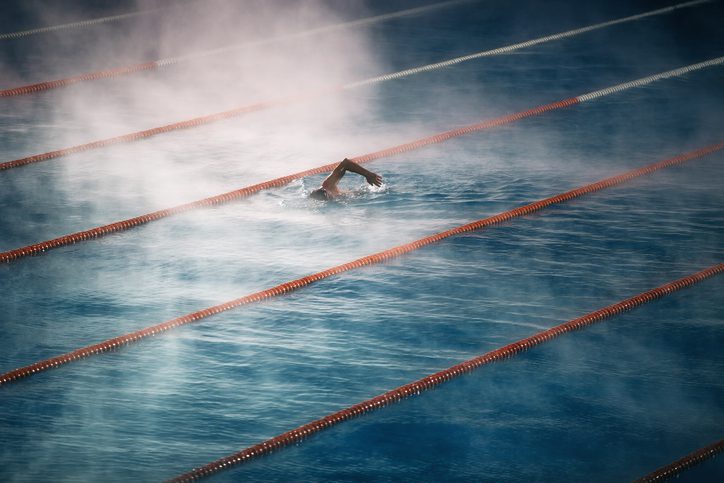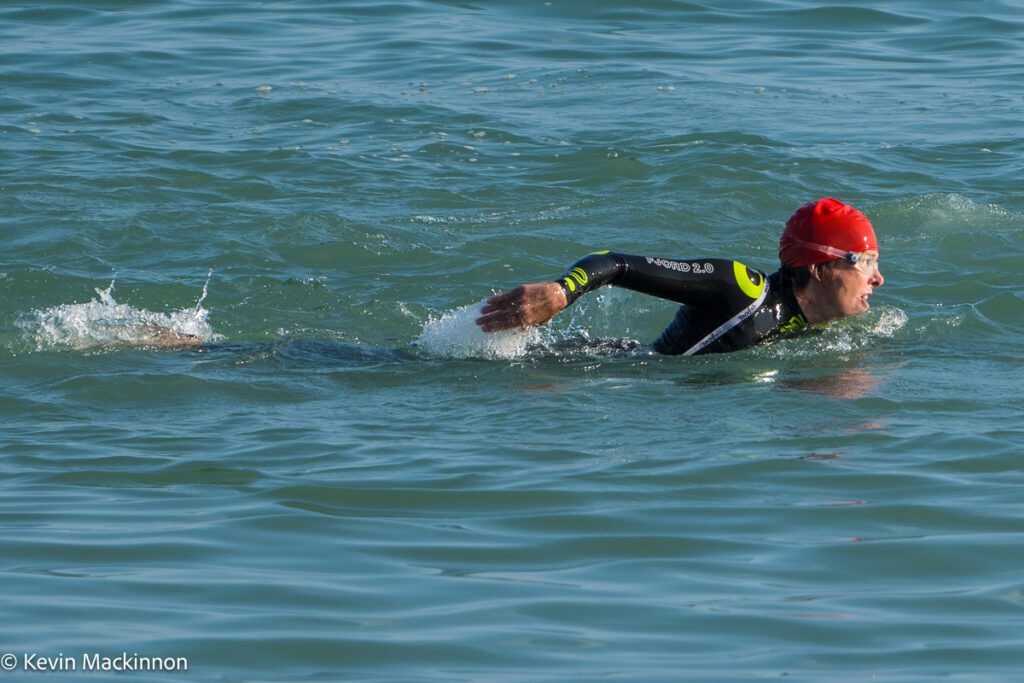Try these swim sets to get ready for your next Ironman swim
Overdistance workouts that will help you nail your next long-distance swim

I was chatting with one of the ladies from the group I swim with last week and she was telling me that she was ramping up her training for an August Ironman in Sweden. Her coach was slowly adding frequency and duration to her bike and runs, but was maintaining the intensity. So, essentially, she’s putting in more easy miles.
When I asked about what shift she was going to make for the swim, she told me the coach figured she was fine just maintaining her current load – which mirrors my current load as we swim in the same program. I am not training for an Ironman in August.
Our group meets three times a week for an hour. Generally, we get in 2.5 to 3 km of swimming with 2 km main sets. Some of the faster swimmers get in a little more. So, my friend was looking at around 8 km of swimming a week, with 6 km of harder work. In mid-May one of those practices switched to an open-water workout, which was still an hour.
She’s a good swimmer, and I have no doubt she will navigate the 3,800 m Ironman swim just fine, but I think she’d be well served to increase her weekly mileage and get in some longer individual swims and before the race.
We seldom ride 180 km on a training day, and we’ll almost never run 42 km unless it’s in a race, but we can swim 3.8 km frequently without digging ourselves into a hole, and I think we should if we’ve signed up for an Ironman.
I’m with her coach on the plan to slowly increase frequency and duration while maintaining intensity. You shouldn’t increase the distance in all three sports at the same time, but I believe she should be doing the same in the water.

Be ready to swim the distance
If you’ve never gone further than 3,200 m in your training, and the first time you’re going to exceed that is in a race (that you’ve spend a king’s ransom for, then flown half way around the world to get to), you’re going to be in far stronger position if both mind and body are ready to swim that distance.
For many it’s a time challenge. There are a finite number of hours in the day and days in the week, so adding time to all three sports can become difficult. Adding time to existing sessions is usually manageable for most people, once they wrap their head around it, but adding in an entire extra session can be a real challenge. If you can, an open water “extra” session with 4,000 m of smooth aerobic work will be a great addition, but you can opt for longer sessions in the pool, too.
Too often we execute main sets that are largely compromised of 50s or 100s, and sometimes a few 200s. But now we’ve got that full-distance race coming up and it’s time to see some bigger numbers.
Keep the sets simple and reduce rest. Here are a few examples:
Set 1: 4,000 m with 400s
• Warm up – an easy 400 with some kicking and drills
• 8 x 400 @ 30 SRI (seconds rest interval). Do the odd ones “clean” (no gear) and the even ones with a pull buoy.
• Finish up with 400 fins/paddles and snorkel to really enforce a nice body position for a total of 4 km
Set 2: 4,600 m with short recoveries
• Same short Warm Up – easy 400 with some kicking and drills then into:
• 800 clean @ 40 SRI
• 4 x 200 pull @ 10 SRI (or less)
• 600 clean @ 30 SRI
• 6 x 100 pull @ 5 SRI
• 400 clean @ 20 SRI
• 8 x 50 pull @ <5 SRI (touch and go on the next 5 or 0 of the clock)
• 200 clean
• 8 x 25 pull – touch and go. If you’re in a 50m pool come to a full stop in the middle – feet to the surface and go.
• Easy 200 cool down for a 4,600m set.
So, if you’re planning on doing a full-distance triathlon, then plan on pushing up volume – longer sets and extra sessions. Even if you’re swimming with a club, it doesn’t take much effort to get in the water a few minutes earlier and stay in the water a few minutes later. Remember FILO (first in, last out). Next thing you know that 4 km to 5 km workout is within your grasp.
Clint Lien is Head Coach at Mercury Rising Triathlon www.mercuryrisingtriathlon.com
This story originally appeared in the July issue of Triathlon Magazine.
